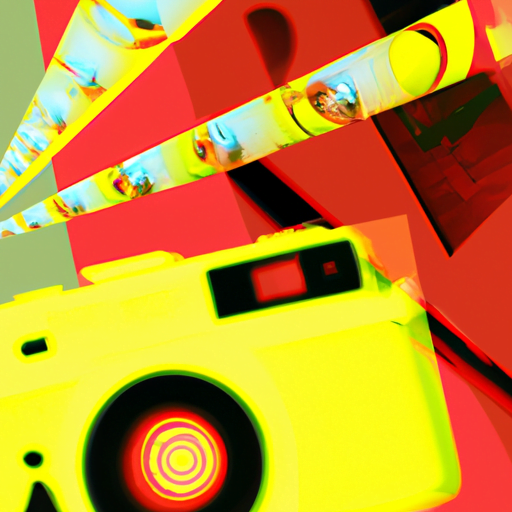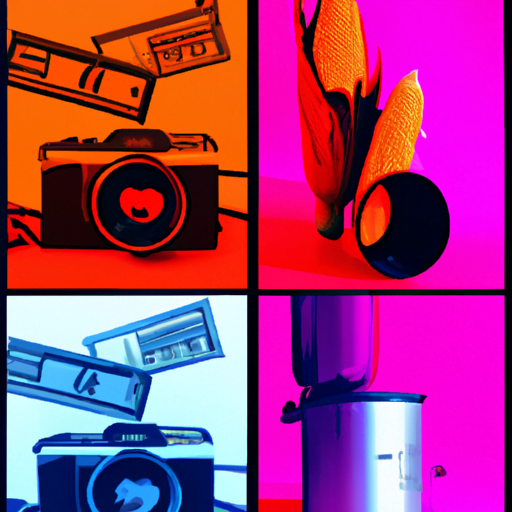
-
Table of Contents
- Exploring Dystopian Design Concepts
- The Origins of Dystopian Design
- The Impact of Dystopian Design in Different Fields
- 1. Architecture and Urban Planning
- 2. Fashion and Clothing
- 3. Graphic Design and Advertising
- The Appeal of Dystopian Design
- 1. Reflection of Societal Concerns
- 2. Aesthetic Appeal
- 3. Provoking Thought and Discussion
- Summary
Exploring Dystopian Design Concepts

Dystopian design concepts have gained significant popularity in recent years, both in the world of art and in various industries. These concepts offer a unique perspective on the future, often portraying a bleak and oppressive world. This article will delve into the origins of dystopian design, its impact on different fields, and the reasons behind its appeal. By examining relevant examples, case studies, and statistics, we will gain valuable insights into the significance of dystopian design concepts in contemporary society.
The Origins of Dystopian Design
Dystopian design can be traced back to the early 20th century, with the rise of dystopian literature. Authors like George Orwell and Aldous Huxley painted vivid pictures of oppressive societies in their novels, such as “1984” and “Brave New World.” These literary works served as a foundation for the development of dystopian design concepts.
As technology advanced and the world became more interconnected, dystopian themes began to emerge in various art forms. Films like “Blade Runner” and “The Matrix” showcased futuristic worlds filled with dark and oppressive elements. These visual representations of dystopia further fueled the interest in dystopian design.
The Impact of Dystopian Design in Different Fields
1. Architecture and Urban Planning
Dystopian design concepts have had a significant impact on architecture and urban planning. Architects and designers have started incorporating dystopian elements into their projects to provoke thought and challenge traditional notions of space.
One notable example is the “Vertical City” concept by architect Luca Curci. This design envisions a future where cities are built vertically, with towering structures that house entire communities. While visually striking, this concept also raises questions about the sustainability and livability of such environments.
Another example is the “Floating City” concept by the Seasteading Institute. This design proposes the creation of self-sustaining communities on floating platforms in the ocean. While it offers a solution to rising sea levels and overcrowding, it also raises concerns about the potential isolation and inequality within these communities.
2. Fashion and Clothing
Dystopian design concepts have also made their way into the fashion industry. Designers have embraced the dark and edgy aesthetic associated with dystopia, creating clothing that reflects a sense of rebellion and resistance.
One prominent example is the work of designer Rick Owens. His collections often feature avant-garde designs with a post-apocalyptic vibe. The use of unconventional materials, asymmetrical cuts, and distressed textures creates a dystopian aesthetic that challenges traditional notions of beauty and fashion.
Additionally, brands like Cyberdog and Demobaza have gained popularity for their futuristic and dystopian-inspired clothing lines. These brands incorporate elements such as neon colors, metallic fabrics, and industrial motifs to create a distinct dystopian look.
3. Graphic Design and Advertising
Dystopian design concepts have also found their way into graphic design and advertising. Companies often use dystopian imagery to create a sense of urgency or to highlight the negative consequences of certain behaviors or actions.
One example is the “Truth” campaign, an anti-smoking initiative that uses dystopian visuals to convey the harmful effects of smoking. Their advertisements often depict decayed lungs and distorted faces, creating a sense of unease and discomfort.
Similarly, the “Save the Arctic” campaign by Greenpeace uses dystopian imagery to raise awareness about the impact of climate change. Their posters feature polar bears stranded on melting icebergs and cities submerged in water, creating a sense of urgency and emphasizing the need for action.
The Appeal of Dystopian Design
Despite the often bleak and oppressive nature of dystopian design, it continues to captivate audiences and gain popularity. There are several reasons behind its appeal:
1. Reflection of Societal Concerns
Dystopian design reflects the fears and concerns of contemporary society. It serves as a visual representation of the anxieties surrounding issues such as climate change, technological advancements, and political instability. By confronting these concerns through design, people can engage in meaningful discussions and explore potential solutions.
2. Aesthetic Appeal
Dystopian design has a distinct aesthetic appeal that resonates with many individuals. The dark and edgy visuals, combined with futuristic elements, create a unique and captivating atmosphere. This aesthetic has influenced various industries, from fashion to interior design, and has become a popular choice for those seeking a bold and unconventional style.
3. Provoking Thought and Discussion
Dystopian design concepts often challenge traditional norms and provoke thought and discussion. By presenting alternative visions of the future, designers encourage people to question existing systems and explore new possibilities. This critical thinking can lead to innovative solutions and a deeper understanding of the world we live in.
Summary
Dystopian design concepts have emerged as a powerful and thought-provoking trend in various fields. Originating from dystopian literature, these concepts have influenced architecture, fashion, graphic design, and more. By reflecting societal concerns, offering a unique aesthetic appeal, and provoking thought and discussion, dystopian design has become a significant part of contemporary culture. As we continue to navigate an uncertain future, dystopian design serves as a reminder of the importance of critical thinking and the need to envision alternative possibilities.
